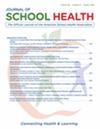School Connectedness Boosts Mental Health in Indigenous Adolescents With Adverse Childhood Experiences: Mediation Analysis of a Longitudinal Study in Australia
Abstract
Background
The study examined whether school connectedness mediates the association between Adverse Childhood Experiences (ACEs) and mental health conditions among Indigenous adolescents, and if this mediation varies by school type—Public versus Private/Catholic
Methods
Using data from 13 waves of the Longitudinal Study of Indigenous Children (LSIC) in Australia (2008–2020), the present study examined the potential mediating effects of school connectedness in the association between exposure to ACEs and adolescent mental health conditions (anxiety/depression) in 636 Indigenous adolescents aged 12–17 years. Based on Baron and Kenny's approach, modified Structural Equation Modeling (SEM) techniques were employed to examine the mediating effect. All models were adjusted for covariates including age, sex, location, and socioeconomic position.
Results
The longitudinal analysis revealed that strong school connectedness and no/limited ACE exposure positively influenced mental health, regardless of school type (p < 0.05). Mediation analysis indicated that school connectedness significantly mediated the association between ACE exposure and mental health conditions for Indigenous adolescents who attended public schools (p < 0.05) but not for those who attended Private/Catholic schools.
Implications for Practice
These results underscore the critical role of school connectedness in supporting the mental health of Indigenous adolescents who have faced early childhood adversity. Notably, it highlights the unique needs of students in different school types and calls for further research to better understand how schools can foster well-being for Indigenous adolescents.
Conclusion
Strengthening school connectedness offers a valuable avenue for promoting mental health among school-going Indigenous adolescents.


 求助内容:
求助内容: 应助结果提醒方式:
应助结果提醒方式:


